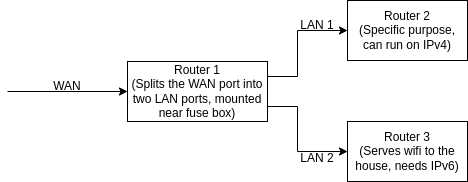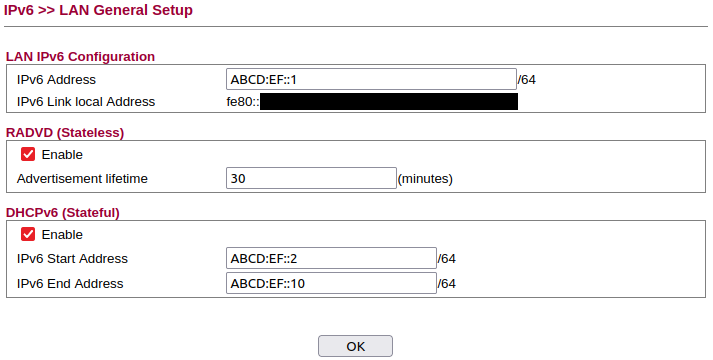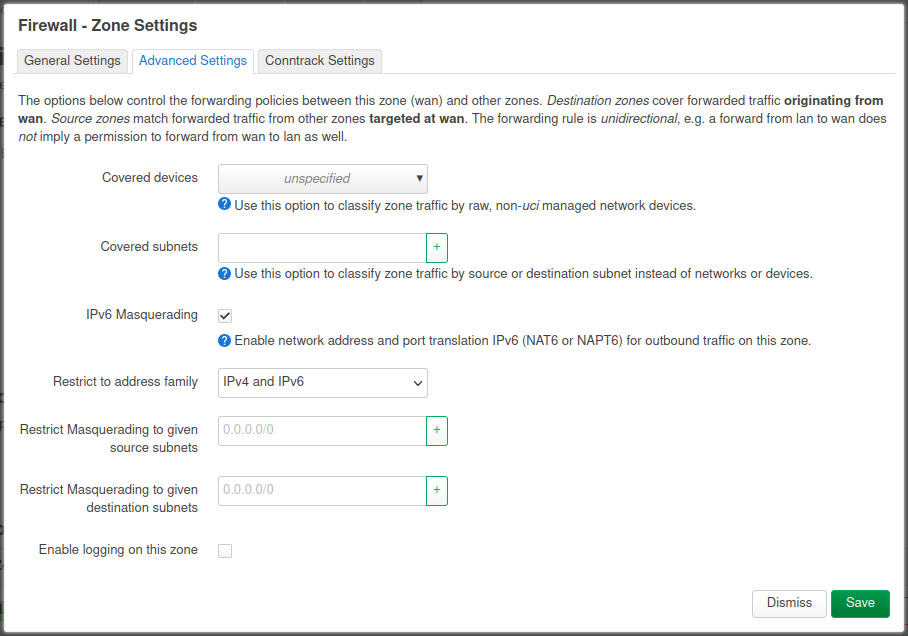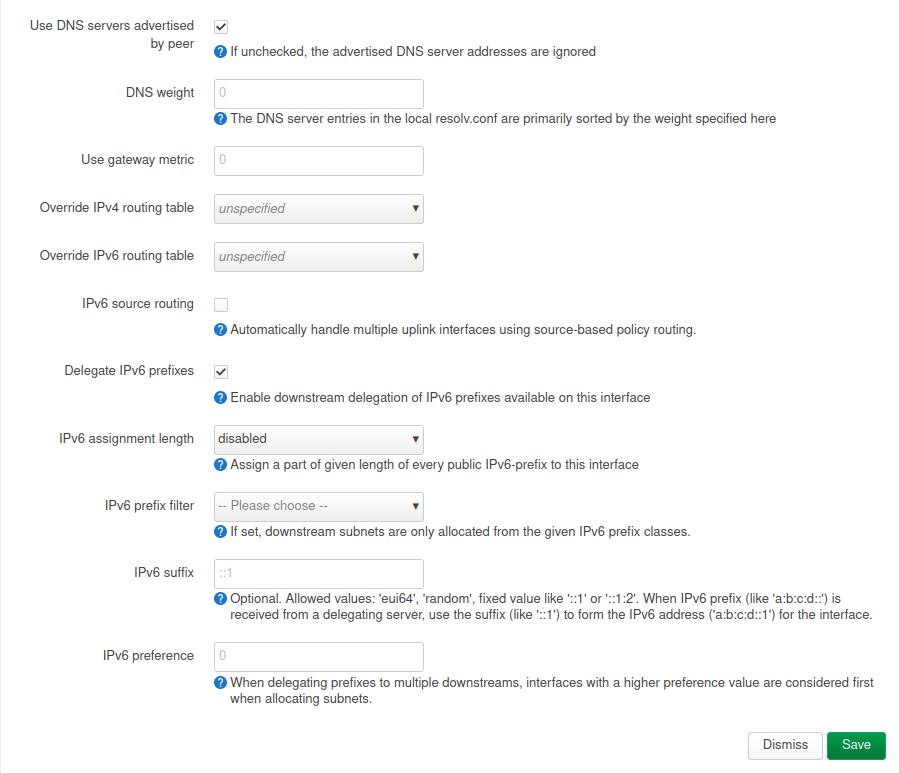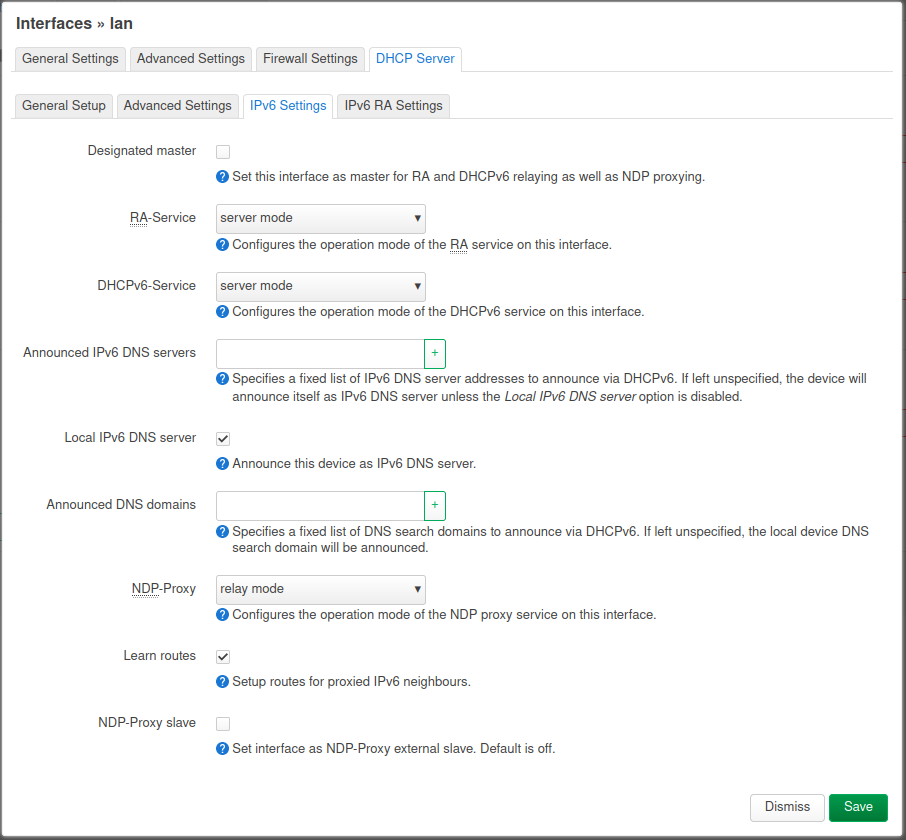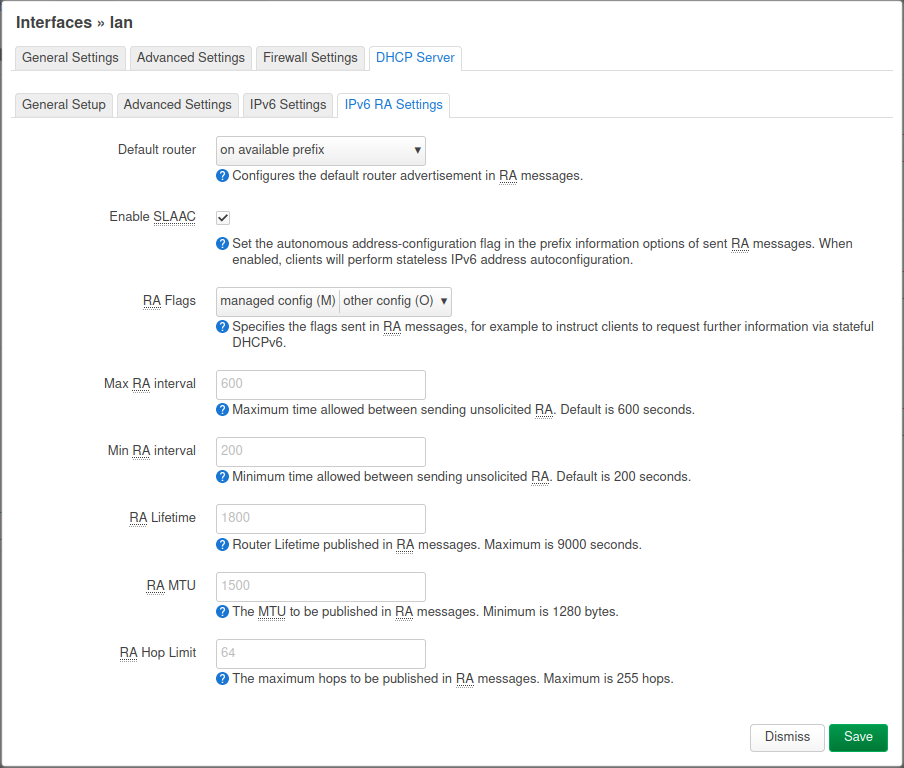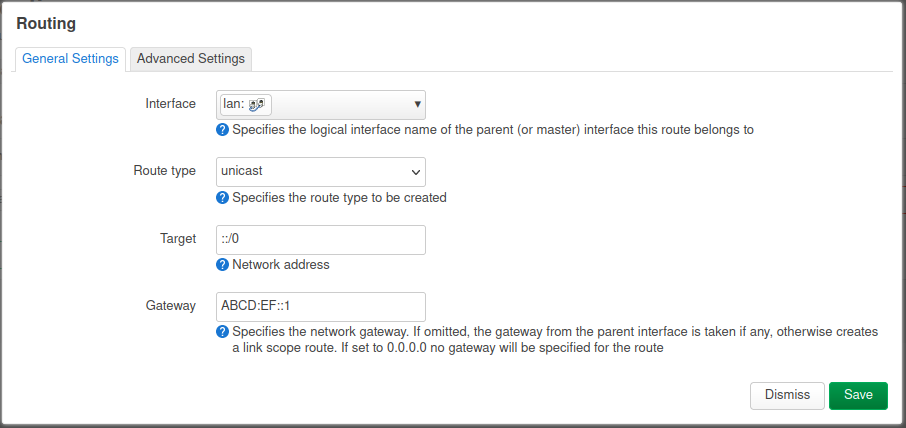3 minutes
Daisy chained routers and IPv6 (NAT66)
For a very specific problem, I needed to daisy chain some routers. This is easily done with IPv4, since it has has NAT. But what about IPv6?
The issue
I recently bought a cheap second hand router. I did this to split the incoming WAN-connection into two LAN-connections. One LAN-connection goes to a separate network with a specific purpose. The other LAN-connection serves as a WAN for another router. The second router is not mounted near a fuse box and can serve much better wifi to the entire house.
Using this topology, IPv4 worked almost automatically. However, IPv6 did not. For router 2, this does not matter that much. For router 3 however, it does matter (I want IPv6 when connecting to wifi). Many answers online involve calling the ISP and asking for another IPv6 prefix. I wasn’t going to do this.
The solution
Turns out, IPv6 masquerading exists. And it works just like IPv4’s NAT. If both routers could just NAT all IPv6 traffic, I consider my problem solved!
Router 1 settings
In router 1, I set a LAN IPv6 as follows:
Router 3
In router 3, an OpenWRT router, I changed a few settings (as per the OpenWRT wiki):
In Network->Firewall->Zones->WAN->Advanced settings, I enabled IPv6 masquerading. This enables NAT6 and causes all IPv6 traffic to be translated, just like with IPv4.
In Network-> Interfaces->wan6->Advanced Settings I disabled IPv6 source routing:
Then, some extra settings were modified to make DHCPv6 work.
In Network->Interfaces->lan->DHCP Server->IPv6 Settings, I make sure that router3 advertises itself as a DHCPv6 server:
In Network->Interfaces->lan->DHCP Server->IPv6 Settings, I make sure that the Router Advertisement (RA) settings are correctly set up. I enabled SLAAC, made sure that the M-flag is enabled in the RA-flags and that default router is on on available prefix. This way, router 3 will always hand out IPv6 addresses, even if there is no connection to router 1. The settings look as follows:
Finally, to make sure router 3 routes all IPv6 traffic to router 1, I set up a static IPv6 route. This is done in Network->Routing->Static IPv6 Routes:
When configured, the list of static routes looks as follows:
Debugging
When pinging websites using IPv6, I got a connection. However, if it doesn’t work, traceroute can help figure out where the problem is:
- No DNS? In router 3, manually set a DNS address in DHCPv6 settings and see if things work now.
- Transmit failure? Router 3’s DHCPv6 settings need some changes.
- Timeout? Router 3 doesn’t have a (properly configured) IPv6 static route or router 1 doesn’t forward the packets (properly).
